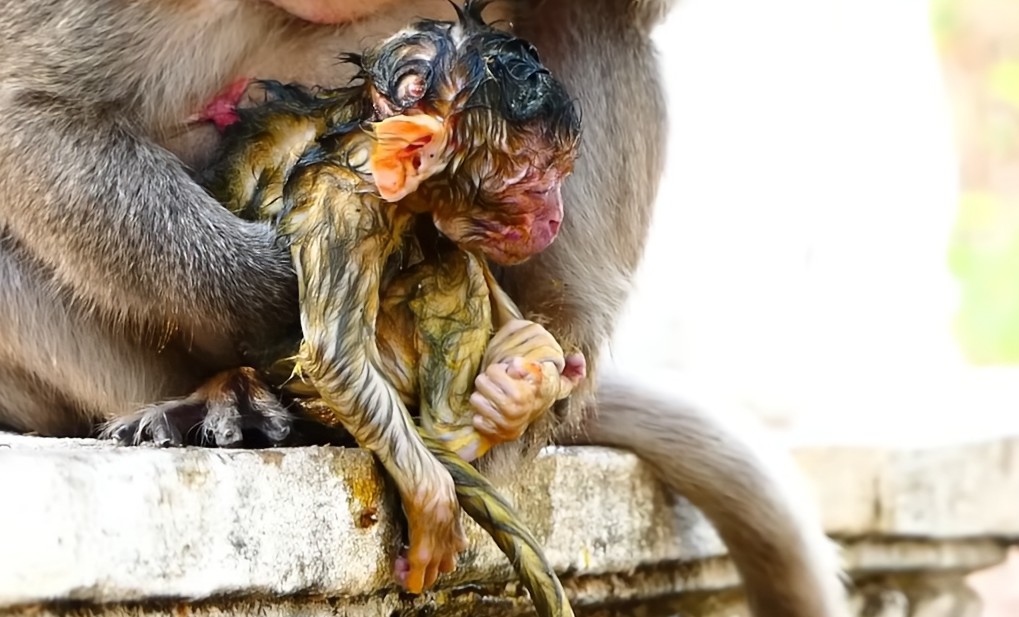Macaque monkeys are known for their strong maternal instincts, and the moment of a macaque mother giving birth to her newborn is a remarkable display of nature’s beauty and resilience. These primates, found in various regions of Asia and North Africa, share a close bond with their offspring, ensuring their survival in the wild.
The birthing process in macaques, like other mammals, begins with labor, during which the mother finds a secure and relatively quiet spot within her habitat, such as a dense tree canopy or a hidden ground area. This choice ensures safety from predators and disturbances. As labor progresses, the mother instinctively positions herself to assist in the delivery. Macaque births typically occur quickly, minimizing the mother’s vulnerability during this time.
Once the newborn emerges, the mother immediately begins cleaning it using her hands and mouth. This action not only removes any residue that may obstruct the infant’s breathing but also stimulates the baby to take its first breath. The bond between the mother and her newborn is formed instantly, as she holds the tiny, fragile infant close to her chest for warmth and security.
The first moments of life are critical for the newborn macaque. It instinctively clings to its mother’s fur, relying entirely on her for nourishment, protection, and emotional comfort. The mother’s behavior demonstrates her innate understanding of the importance of these early interactions, which foster the baby’s physical and social development.

This natural event highlights the strength and care inherent in the animal kingdom. The macaque mother’s nurturing actions serve as a reminder of the universal power of maternal love, showcasing the incredible instincts and behaviors that ensure the survival of her species in the wild.

